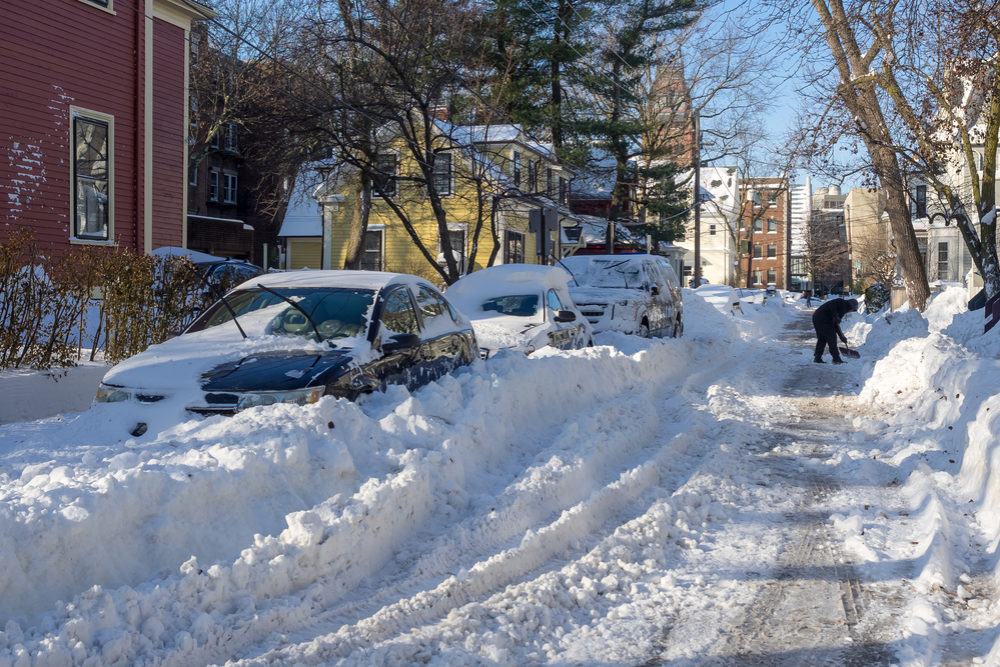Carbon Monoxide Risks May Increase With Onset Of Deadly Cold Weather Across U.S. This Week

As vast areas of the U.S. will face extremely cold temperatures this week, Americans need to exercise caution to avoid a risk of carbon monoxide poisoning while trying to stay warm.
A polar vortex is forming across parts of the Midwestern and Northeastern United States, which is expected to cause temperatures in some areas to drop as low as -50 degrees. In advance of the weather, Americans are being urged to check their home’s heating systems, to make sure it is running efficiently and does not pose a risk of carbon monoxide leaks.
The weather system involves a large area of cold air that is circling high in the atmosphere, typically over the North Pole. However, due to the meandering jet stream, some of the vortex can be pushed down into North America, causing significant temperature decreases of which people and home heating systems are not often exposed.

Learn More About
Exposure to Carbon Monoxide Gas May Cause Permanent Brain Damage, Serious Injury or Death.
Learn More About this Lawsuit SEE IF YOU QUALIFY FOR COMPENSATIONWith heating systems working extra hard to maintain the desired temperatures in homes, first responders and utility companies report gas and carbon monoxide (CO) leaks are a particular risk, and routine maintenance on a home’s heating system, or systems, can lower the chances of one occurring.
Gas heaters, water heaters, fireplaces, generators, automobiles, and electric heaters are all possible sources of carbon monoxide leaks during cold weather. Due to its ability to enter the home through the most minute spaces, individuals should always take precaution when using generators, grills, camp stoves, or other gasoline, propane, natural gas, or charcoal burning devices. These devices should always be kept at safe distances from doors, windows, vents, and never inside of the home or garage.
Power outages due to fallen tree limbs on power lines from winds or snow accumulation on tree limbs and softened grounds are also common during severe snow storms. In those situations, many individuals resort to powering their water heaters and boilers, along with refrigerators and other home appliances, with generators that emit CO. However, despite the cold temperatures, officials warn that generators should always be kept outside of the home and never operated in enclosed areas.
Carbon monoxide is a colorless and odorless gas that is produced by the incomplete burning of various fuels, including coal, wood, charcoal, oil, kerosene, propane, and natural gas. The gas is often referred to as the “silent killer,” since it is difficult to detect without the use of a properly functioning detector or alarm, and is a leading cause of poisoning deaths in the United States.
Due to the inability to detect the gas without the use of a carbon monoxide detector, individuals may be exposed to low levels of the gas over a long period of time, potentially resulting in severe injury or permanent brain damage from carbon monoxide poisoning.
The initial symptoms of carbon monoxide exposure may cause feelings of nausea, headaches, dizziness, drowsiness, and shortness of breath, whereas prolonged exposure may result in mental confusion, vomiting, loss of muscle coordination or control, loss of consciousness, and ultimately death. It is common for individuals to mistake the initial symptoms of CO exposure for the flu, often times prolonging treatment and causing increased adverse health effects.
At least two CO poisoning accidents have been reported within the last several days, resulting in two fatalities. News sources indicate that a family of five, including a pregnant woman and three young children have all been hospitalized for CO poisoning at a Cobb County Georgia hospital after first responders found a charcoal grill lit inside of the home’s bathroom, which was being used as a heat source.
Authorities also reported late last week two Michigan parents of a five month old were killed by CO poisoning emanating from a generator inside of a home. Reports indicated the levels of CO inside the home were twice the levels considered to be deadly, and that it was a miracle the five month old was still alive and could be rushed to a local hospital for treatment and care.
According to the U.S. Centers for Disease Control and Prevention, carbon monoxide poisoning kills about 500 people in the U.S. annually, and is linked to about 15,000 emergency room visits. In many cases, the injuries or deaths could have been prevented by the use of carbon monoxide detectors and proper maintenance of heating systems and generators.
Want a weekly update on top lawsuits, recalls & warnings?
"*" indicates required fields





0 Comments